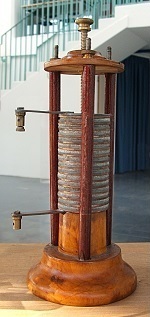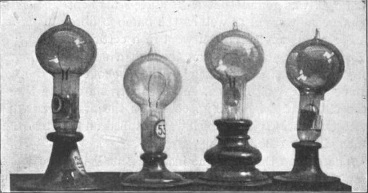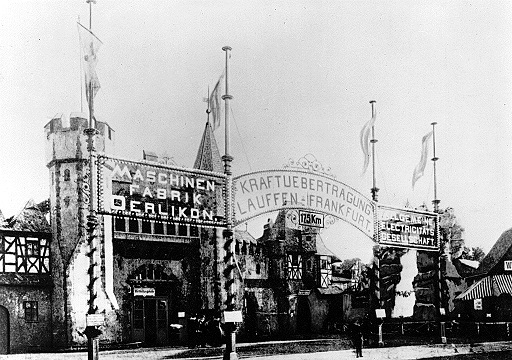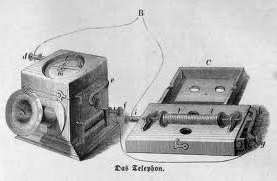Historical review
The existence of static electric and magnetic fields have been known to mankind for a long time. As early as 500 B.C. in ancient Greece, experiments with amber on static electricity were reported. Around this time the nature of amber (Greek “ elektron” ) to attract small objects after being rubbed with a woolen cloth or cat fur was discovered by the natural philosopher Thales of Miletus (circa 624–546 B.C.). As we now know, it is based on the static electricity of amber. The origin of the term “electricity” from the Greek word "elektron" is based on this first reported observation on electricity. During the same time period electrical currents, generated by the electric ray, were applied as therapeutic medical treatment. Also in China, around 3,000 years ago, the magnetic field of the earth was used as a compass. However, very little was understood about these effects by people at these times, including the electrical phenomenon of lightning.
In the 17th and 18th century people started to analyze these phenomena in more detail. Electric blasting machines (the first electrostatic generators) and batteries were built. Around 1800, the Italian physicist Alessandro Volta invented a chemical power source, the so-called voltaic pile, a predecessor of today's storage batteries and dry-cell batteries. Generating direct currents was now possible for the first time. Benjamin Franklin developed the lightning conductor and Luigi Galvani showed in his 1791 published experiments on frog leg muscles, that electrical processes are important for living beings. But gradually the nature of the electric and magnetic fields became better understood through experiments by Hans Christian Oersted, Michael Faraday, André-Marie Ampère, Georg Simon Ohm, Joseph Henry, Heinrich Hertz and many others during the 19th century. James Clerk Maxwell was able to unify all electric and magnetic phenomena with only one system of equations, the so-called "Maxwell's equations". Thus the basis for a solid understanding of all electromagnetic processes was accomplished. Maxwell’s prediction of electromagnetic waves was confirmed experimentally in 1887 by Hertz.


1. Luigi Ciesa, license: CC BY-SA 3.0), 2. unknown, license: public domain, both via Wikimedia Commons
In about 120 years the variable usability of electricity and electromagnetic fields has changed people's lives more than any other technology. The various usages in residential, industrial, military and medical fields has in the past six decades exploded.
Direct and alternating current
With the understanding of the electric and magnetic phenomena also came the development of their technical use, at first in the form of direct and alternating current. First developments included galvanization, the telegraph and electric lights. Public carbon arc lamps were introduced in 1810. Bulbs in the modern sense (colloquially "light bulbs") were developed in 1835 with the participation of Thomas Alva Edison and brought to the market in 1880. For the use of incandescent bulbs, the first public electrical network was built in 1882 in New York using direct current. The development of power generators and electric motors, for example by Werner Siemens, happened during that time. In Berlin in 1881 the first electric cable car was put into operation. Around 1887 there were about 2000 electric motors in the U.S., and by 1889 there were over 18,000.


1. William J. Hammer, license: public domain, 2. unknown, license: public domain, both via Wikimedia Commons
The world's first long-distance electric current transmission was established in 1882 from Miesbach to Munich with a distance of 57 kilometers. In this pioneer work Oscar von Miller, who later founded the German Museum in Munich, used 2000 volt direct current carried on a hardly appropriate telegraph line made out of iron wires, which failed after a few days. The current could not be transmitted efficiently over long distances because of the high line losses, so the first power supply networks were operated with direct current generator block stations directly in the cities. In America, in the years 1887 to 1889, Nikola Tesla carried out pioneering work on multi-phase alternating current and its transmission. Alternating current was only able to prevail because electrical energy could be transmitted with low distribution losses over long distances by using transformers and high voltage lines. While Thomas Edison was strictly against the use of alternating current in America, in 1891 in a further act of technological pioneering, Oscar von Miller built the first 15 kV three-phase alternating current high voltage line in Germany from the hydroelectric power station Lauffen (which belongs now to the district of Heilbronn) to Frankfurt with a distance of 175 km. Miller can therefore be regarded as the founder of a development that has led to a close meshed network of alternating current electric power system which is still used in many parts of the world today.

photo: unknown, license: public domain, via Wikimedia Commons
Around 1890 about 96 percent of the electricity produced was used for lighting purposes; by 1900 the uptake rate had fallen to 53 percent. In 2013 the proportional rate of the world was 15 percent (source: enlighten-initiative.org). The net electricity consumption in Germany of 534 billion kilowatt-hours (kWh) in 2012 was divided approximately 47 % by industry, 26 % by private households, 14 % by trade and commerce, 10 % by public institutions, about 2 % by agriculture, and transportation (including railways) 2-3 % (sources: statista ; AG Energiebilanzen e.V.).
Radiofrequency fields
The early history of technical application of radiofrequency fields is closely connected with the development of wireless information transmission. In 1886, in a laboratory experiment, Heinrich Hertz succeeded in the transmission of electromagnetic waves over a short distance from a transmitter to a receiver. In this experiment he discovered radio technology and published his findings in 1888. In the years 1897-99 the first practical applications were developed in the form of (at first short-distance) radio-telegraph connections by Guglielmo Marconi and Ferdinand Braun, who in 1909, jointly received the Nobel Prize in Physics (source: Nobelprize.org). At this time, there were already radio-telegraph connections between ships and the mainland, and between the Old and the New World.

photo: anonymus, license: public domain, via Wikimedia Commons
The development of electrical speech and audio transmission began, initially wired, in the years 1860-1861 with the invention of the telephone by Philipp Reis, which was developed further in 1876 by Alexander Graham Bell for usability and marketability. First attempts were conducted in moving trains on behalf of the German Reichspost (German Imperial Mail) for the civil use of mobile communication by radio. At the beginning of 1926 a regular railway mobile communication started operating for travelers on the railway line between Berlin and Hamburg. After the second World War the German postal service ran the first mobile test networks in large cities, major ports, highways and inland waterways at the frequency range 30 MHz, 80 MHz and 160 MHz, respectively. In 1958 the A-network, a public analogue mobile radio system in a standard 160-MHz technique, was established (operating until 1977). This was followed in Germany by the B-network (1972-1994, about 150-160 MHz), the C-network (from 1985 to 2000, approximately 450-456 MHz) and from 1992 with the D-, E-, UMTS and LTE networks, the digital mobile networks in the frequency range 870 MHz to 2690 MHz.


1. various, license: public domain, via Wikimedia Commons, 2. © Túrelio (via Wikimedia-Commons), 2007 / Lizenz: CC BY-SA 3.0
Since the beginning of the last century a vast number of other civil and military applications using radiofrequency fields have been developed in addition to speech and mobile communication. These can be used for communication, navigation, position finding, remote control, therapeutic treatment, measurement and heating as well as for transmission of sound, images and data. Of these, broadcast, television, radar, satellite communications, maritime and aeronautical radio, radio control systems, microwave ovens and WiFi are the best known applications. During the war years of the last century the development of speech radio, radar, sea and air communication and general radio were specially developed for military and propaganda reasons. However in the post war years, until late last century the technological evolution was primarily dedicated to the further development of civil applications with analog technology, such as television, microwave ovens and therapeutic applications. In the latter part of the last century and up to now, an unprecedented success of digital radio applications with radio frequency fields has taken place, especially in the field of mobile radio and wireless data traffic. For example, the global number of mobile radio connections increased from 34 million in 1993 (Source: statista) to 6.7 billion in 2013 (Source: ITU) (with "only" about 3.2 billion users, i.e. about 46% of the world's population) (Source: GSMA).

photo: Rainer Lippert, license: public domain, via Wikimedia Commons
Today’s mobile phones or smart phones are predominantly based on GSM standard (Global System for Mobile Communications, in Germany since 1992) which apart from giving a good transmission quality, also provides data applications. In addition, a nationwide UMTS network has been expanded in Germany since 2001. Due to UMTS (Universal Mobile Telecommunications System) and HSPA (High Speed Packet Access, since 2006) mobile internet surfing at high speed is possible. In the latest LTE networks (Long Term Evolution, since 2010, LTE-Advanced, since 2013) even higher transfer speeds with download speeds up to 300 megabits per second at LTE and up to about 1 gigabit per second in LTE-Advanced (source: ZTE) are possible.

photo: Anders, license: public domain, via Wikimedia Commons